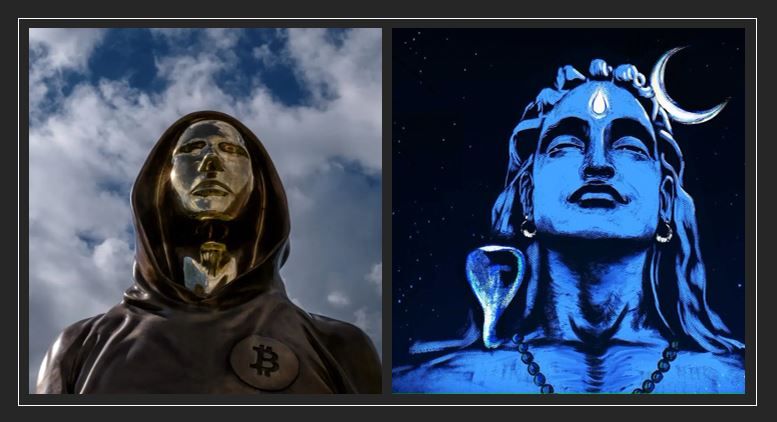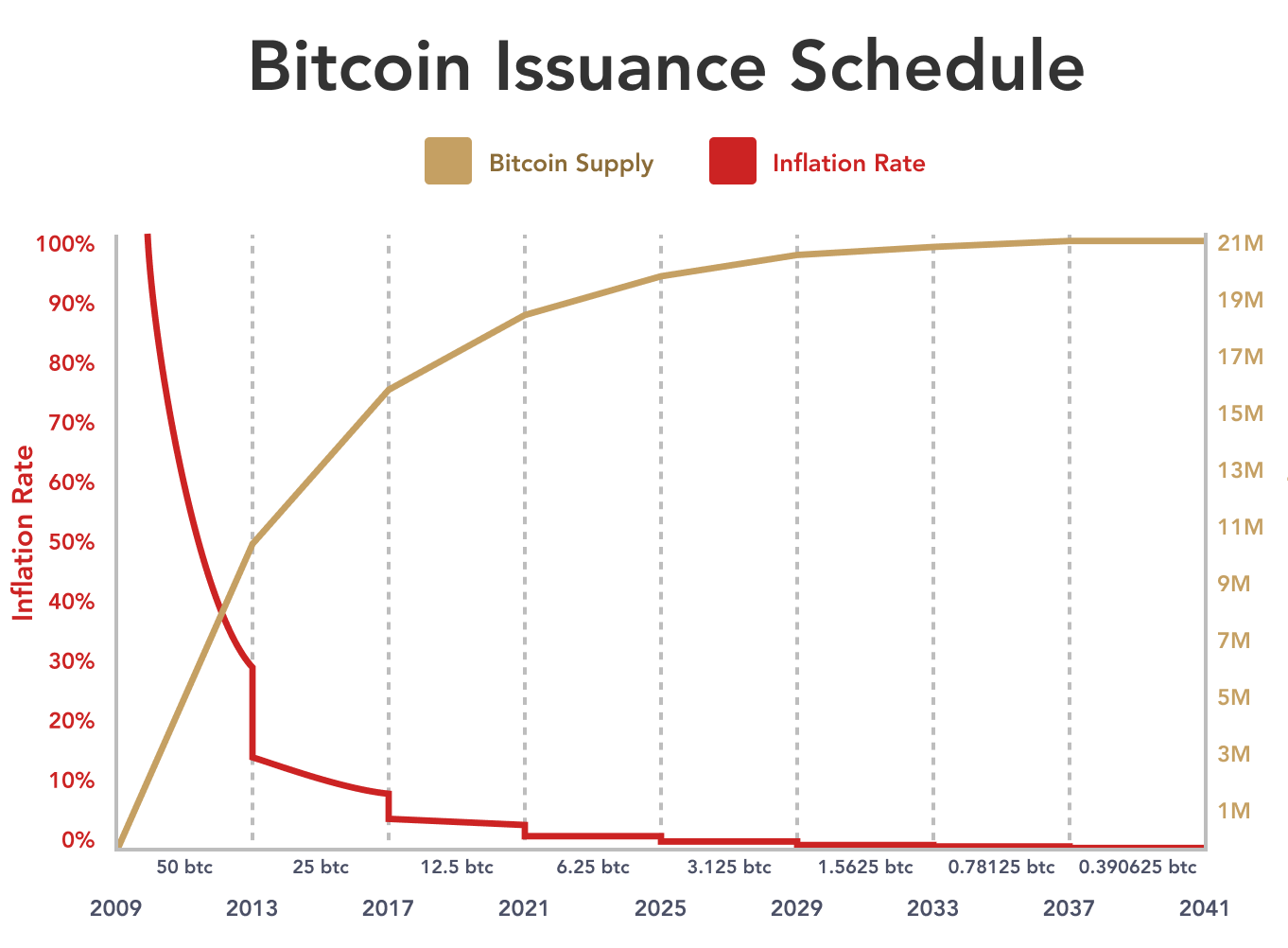Bitcoin and Yoga: Pathways to Individual Sovereignty (Part II)

Part II: Mythical/Mystical Origins
The origin stories of both bitcoin and yoga are epic tales that have been and will continue to be told for generations to come. While the story of how yoga came to be is many of years old and bitcoin's is approaching 15 years, there are fascinating similarities. The stories have a mythical nature that idealizes their creator. Followers have a sense of spiritual awe around the incredible power their ideas have set in motion.
The oral traditions of the Vedas tell the story of the the first yogi, the original Adi Shiva Yogi meditating in a cave in the Himalayan mountains. According to yogic legend, one day over 15,000 years ago, the daughter of the king, Parvati came to his cave. She fell in love with this man who had reached full enlightenment, dancing and meditating in a transcendental state. Together they bore Ganesha, a god of abundance and intelligence. It is said that Adi Shiva Yogi shared 114 sutras, or lessons, with seven sages, the Saptarishis. He gave them knowledge to spread truth to the people as a guru, a teacher who brings light into darkness. The legend of Adi Shiva Yogi is a foundational mythical story that has inspired generations of yogis to go beyond human limitations to reach enlightenment.
Satoshi Nakamoto first released the Bitcoin white paper to a cryptography mailing list, “Bitcoin: A Peer-to-Peer Electronic Cash System” on October 31, 2008.[i]. When version 0.1 of the Bitcoin Core software was released into the wild on January 3, 2009 with the mining of the first block, it contained the ironic daily headline, “The Times 03/Jan/2009 Chancellor on brink of second bailout for banks.” This novel, digital monetary system had been set in motion in a way that can never be replicated. We do not know who the pseudonymous Satoshi is or was, with his last correspondences coming in 2011. However, we do have many writings from the cryptography mailing list and forums that Satoshi participated in - of which The Book of Satoshi excellently summarizes. Satoshi’s brilliant amalgamation of over 40 years of research and development in computer science and cryptography discovered digital scarcity for humanity. The nature of the technology leverages mathematical principles, thermodynamics, Austrian economics and human behavior that aligns incentives and empowers the individual in ways never before achieved in human civilization.
Bitcoin is the greatest form of money humans have ever discovered. Even other naturally produced commodities such as gold or silver double in supply every 60 or 10 years, respectively. Satoshi introduced a set monetary policy in the initial code. This distribution could only be changed by the consensus of thousands of independent individuals. Since the value of each coin is intersubjective and relative to its supply, it is not in the best interest of individual bitcoiners to change or raise the supply limit. Bitcoin represents rules without rulers, with core elements remaining unchanged in 14 years and are essentially immutable. A hard cap of 21 million coins, distribution of at first 50 coins every block, with the coinbase halving in number every 210,000 blocks until the last bitcoin is mined over a 40-year period ending in 2140.

Currently a miner is rewarded with 6.25 bitcoin roughly every ten minutes. The difficulty in mining is adjusted every 2016 blocks, roughly 2 weeks, based on the amount of energy or hashes per second being contributed to the network.[iii] This ensures a new block is added on average every ten minutes and does not speed up as more miners contribute more energy to mining the increasingly valuable bitcoin. Solving the Byzantine General’s problem and double spend problem through an open ledger mechanism removes trust from money, ensuring anyone can verify transactions, thus establishing a fair money.
No one knows the physical nature of Satoshi Nakamoto. Satoshi means "wise"; Satoshi understood it was the centralization of previous attempts at digital cash that led them to fail, and why he/she/they would need to eventually disappear.
“A lot of people automatically dismiss e-currency as a lost cause because of all the companies that failed since the 1990’s. I hope it’s obvious it was only the centrally controlled nature of those systems that doomed them. I think this is the first time we’re trying a decentralized, non-trust-based system.”[ii]
When you have created a solution to central bank money printing and ultimately a competing money to government fiat, there can not exist a head to cut off, or the project will fail. Indeed, Satoshi disappeared the day another bitcoin developer Gavin Andresen was called in to visit the CIA.
While there is a digital trail of Satoshi, there is no physical evidence or artifacts remaining from the story of the first yogi, Adiyogi. The depiction of ultimate bliss, enlightenment, or moksha, experienced by the first yogi led the sapatarishis to remain in the presence of Adiyogi for 84 years, before becoming a guru and spreading the knowledge of yoga to the next generation of individuals to bring light into darkness. While there are religious traditions that have taken these stories, the yogic tradition predates religion and taps into deeper human consciousness. In the Sikh yogic lineage, the phrase sat nam is a common greeting, translating into truth is my name. There is deep inner knowing on the yogic path of individual sovereignty that the story of Adiyogi inspires, just as there is truth in the way perfect money was introduced to the world. In Japanese, "Naka" can mean "medium" and moto means "origin or foundation".
Our amazing capacity as humans to understand and explain life through stories is wonderfully displayed through Adi Shiva Yogi and Satoshi Nakamoto, whose identity as individuals matters little compared to the ideas and universal truths they represent and introduced to the world. Yoga and bitcoin both enable access to a universal consciousness, which can be better understood through exploring the development of yoga and the emergence and use of money over thousands of years.
[i]Nakamoto, Satoshi, Bitcoin: A Peer to Peer Electronic Cash System, October 31, 2008, <https://bitcoin.org/bitcoin.pdf >
[ii]P2P Foundation <https://p2pfoundation.ning.com/forum/topics/bitcoin-open-source?commentId=2003008%3AComment%3A9493>